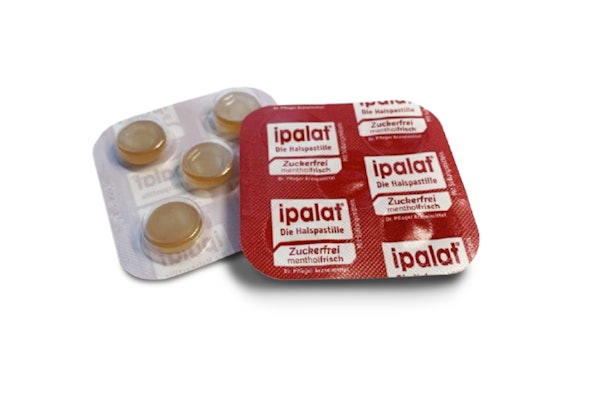Almac is a global pharmaceutical contract manufacturing and packaging service provider to more than 600 pharmaceutical and biotech companies worldwide. In addition to packaging services, the firm provides R&D, biomarker discovery and development, and active pharmaceutical ingredient (API) manufacture and formulation development capabilities.
The company, with 3,000 employees, is based in Craigavon, Northern Ireland, and has U.K. facilities in Elvingston and Manchester. In the U.S., it has facilities in Durham, NC; San Francisco; and two sites in Pennsylvania—Souderton, site of a recently opened, $120 million, 240,000-sq-ft North American headquarters facility; and Audubon, the company’s U.S. commercial pharmaceutical co-packing flagship operation.
Build versus buy
At the time of Almac’s initial requirements gathering in late 2009, there were many unknowns in the regulatory area, not least in the U.S. and E.U. Not only did it need a system that would address the majority of known serialization requirements, but it also needed one sufficiently flexible to permit any addition of updates to meet future global legislative e-pedigree and serialization requirements, in effect future-proofing of the system as much as possible. At that time, there was simply no configurable system that offered this flexibility.
Since Almac had the in-house engineering and information technology expertise, it decided to build its own solution. Being self-supportive was an important factor, since the company did not want to be in a position to rely on a vendor for updates and support, nor did it want to rely on a vendor’s interpretation of global regulations.
Designing the system internally also allowed for a phased approach and a validation effort consistent with business and client requirements. And because it was designed in-house, it could be completely customized around current internal processes, thus reducing the impact of integrating the new equipment and processes that serialization would require.
A final benefit of a custom-built system is that Almac would possess the expertise in-house to customize the system to any customer requirements.
(For example, some customers are serializing not in response to regulatory or country requirements, but for internal stock control reasons. Such customers may have differing information they would require to incorporate within the 2D code, a different serialization number structure, etc.)
Almac does acknowledge that the most significant disadvantage of a custom-built system is that it does require a higher degree of testing to satisfy the requirements of Good Automated Manufacturing Practice (GAMP) version 5.
Mobile serialization solution
Rather than retrofit each packaging line for serialization, Almac made the decision to build a portable solution that could be wheeled from line to line and “bolted on” as needed.
Almac calls the system OPSIS, which stands for OverPrint Serialization and Inspection System. OPSIS incorporates a Hapa Red Cube printer, a Cognex vision system, and an LVS verifier. The software Almac developed can easily be incorporated into several printing systems, providing further flexibility.
In addition to serializing packages at the item level, OPSIS supports aggregation at the case and pallet level. To date, aggregation at Almac has been a manual process, including case and pallet label scanning, due to the small batch sizes involved. Almac says the potential for automatic aggregation of units exists; however, use of this function has not been required so far.
OPSIS provides for controlled handling of rejects, rework, quality assurance sampling, and in-process checks.
Batch-specific label information is set up well in advance of production by the scheduling department, and is approved by the Quality Assurance department before this information reaches the OPSIS system.
Although many SOPs and other controls were implemented to support the introduction of OPSIS, Almac reports that many of these additional procedures have been relaxed, as OPSIS is meeting all requirements.
An in-house regulatory team remains vigilant about keeping up with evolving country regulations around the globe, and new information is fed back into the software to keep it current.
Offline verification is built into the inspection process—an additional verification check is carried out against a defined sampling plan that ensures a representative sample is taken across the batch. An enhanced verification is performed at unit level in accordance with GS1/ISO (e.g., ISO15415), which includes a single point and multirotational verification. Reports are generated and form part of the batch record. Essentially, the online “grading” acts as an in-process control, while the offline “verification” provides additional assurance that the required print quality has been achieved throughout the batch.
In the event of a change to a job, the affected job is cancelled, and the job creation is begun anew. This ensures all of the necessary controls are in place to prevent printing errors occurring on the actual line.
Because it is a bolt-on solution, OPSIS did not disrupt or impact current packaging lines. Another advantage is that validation was limited to the unit itself and the corresponding software.
In terms of cost, Almac absorbed the entire up-front cost internally as an investment in response to current and future industry and regulatory requirements. Almac does plan to pass on a nominal upcharge to customers whose products require serialization. Although Almac believes OPSIS will give it a leg up on competitors that so far have not invested in serialization, its main goal was to be responsive to clients that sought serialization solutions.
Liked this article? Download the entire playbook here.



















